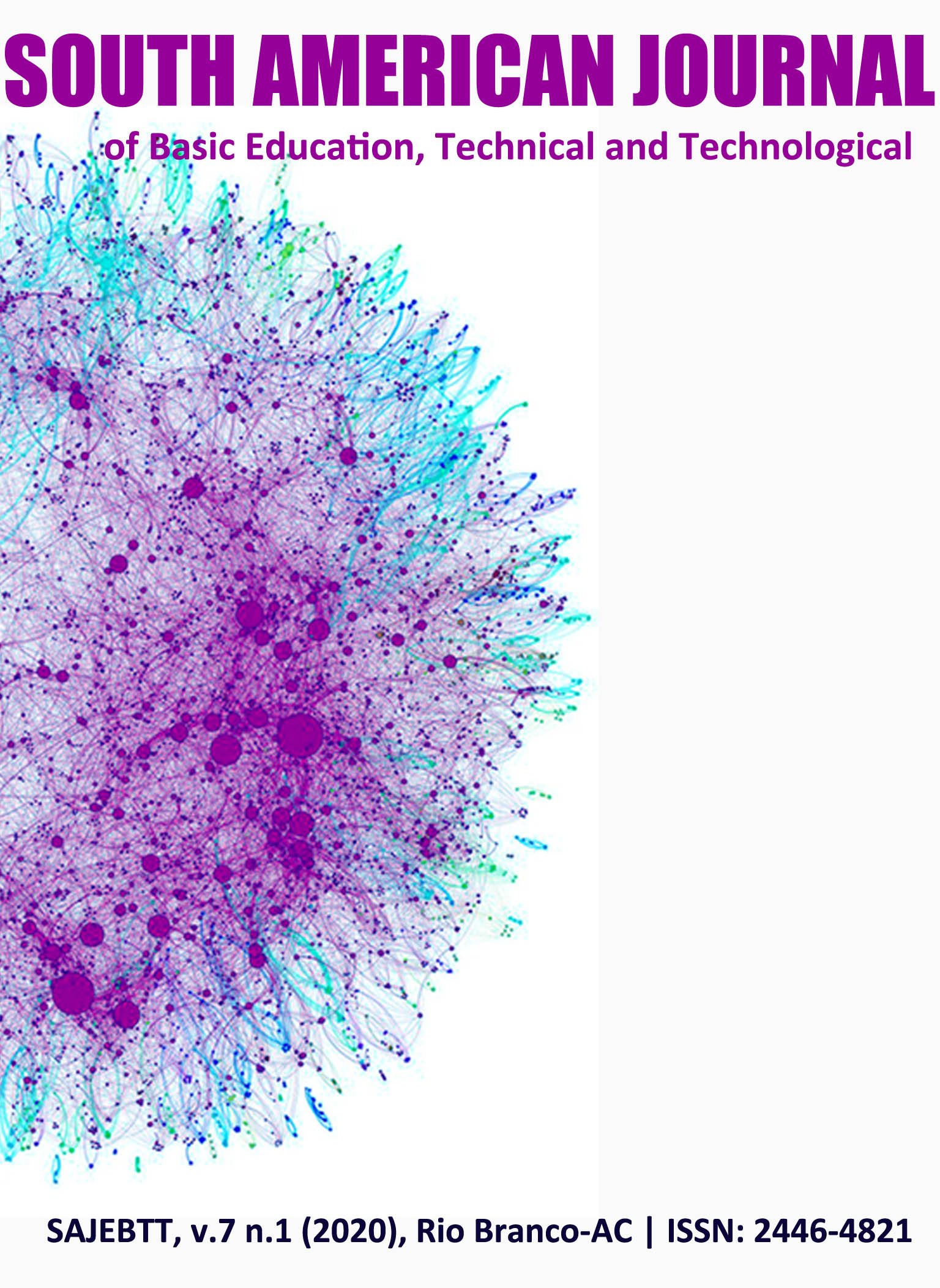ACD/CHEMSKETCH® em investigações da borracha:
um polímero versátil do cotidiano ao inusitado
Keywords:
ACD/ChemSketch®; borracha; Ensino Médio; PIBIC/EM.Abstract
This paper is a clipping of a scientific-pedagogical project in which the beginning researchers (BRs), the way cooperative and participatory, developed activities mediated by dialogues and interactions in the investigation of aspects regarding rubber, their composition, structure, properties and applications (from the daily to the unusual). When conducting this research with the students of High School, we sought to trace methodological contributions to the Teaching of Chemistry mediated by ACD/Chemsketch® and to contribute with the community of chemical educators, indicating potential sources of inspiration for contextualized approaches in the preparation and execution of his classes. In summary, we highlight the relevance of cooperative actions in the persistent search for the resolution of each challenge launched, through the constant interaction between the BRs. It has been noticed that the approach of this nature has sensitized those involved to the interest in scientific knowledge and teaching.
Downloads
References
[2] MORAWETZ, H. Polymers: The Origins and Growth of a Science. Editora Dover Pubns, 1995.
[3] OSBORNE, J.; HENNESSY, S. Literature Review in Science Education and the Role of ICT: Promise, Problems and Future Directions, Bristol: United Kingdom, 2003.
[4] BALANSKAT, A.; BLAMIRE, R.; KEFALA, S. The ICT impact report: A review of studies of ICT impact on schools in Europe, 2006.
[5] FRANCISCO, W.; DE MORAIS, M. A.; MANOCCHIO, C. A.; FRANCISCO JR., W. E.; RUIZ, M. Implementação e avaliação de um curso introdutório ao software ACDLabs ChemSketch a graduandos em Química. XIV Encontro Nacional de Ensino de Química – XIV ENEQ. UFPR, 21 a 24 de julho de 2008, Curitiba, PR.
[6] RAUPP, D.; SERRANO, A.; MARTINS, T. L. C.; SOUZA, B. C. Uso de um software de construção de modelos moleculares no ensino de isomeria geométrica: um estudo de caso baseado na teoria de medição cognitiva. Revista Electrónica de Enseñanza de las Ciencias, v. 9, n. 1, p. 18-34, 2010.
[7] PAULETTI, F.; ROSA, M. P. A.; CATELLI, F. A importância da utilização de estratégias de ensino envolvendo os três níveis de representação da Química. Revista Brasileira de Ensino de Ciência e Tecnologia. Ponta Grossa, v. 7, n. 3, p. 121-134, set./dez. 2014.
[8] SILVA, C. S.; JÚNIOR, E. V. S.; PIRES, D. A. T. O uso de software de representação molecular em 3D como material didático interdisciplinar para o Ensino de Química. Experiências em Ensino de Ciências, v. 12, n. 2, p. 66-79, 2017.
[9] PAULETTI, F.; CATELLI, F. Um estudo de caso: programas computacionais mediando o ensino de isomeria geométrica. Revista Brasileira de Ensino de Ciência e Tecnologia. Ponta Grossa, v. 11, n. 1, p. 250-269, jan./abr. 2018.
[10] MORAES, R. de A.; DIAS, A. C.; FIORENTINI, L. M. R. As Tecnologias da Informação e Comunicação na Educação: as perspectivas de Freire e Bakhtin. UNIrevista, v. 1, n. 3, p. 1 – 9, julho 2006.
[11] MACHADO, A. S. Uso de Softwares Educacionais, Objetos de Aprendizagem e Simulações no Ensino de Química. Química Nova na Escola, v. 38, n. 2, p. 104-111, 2016.
[12] PPC, 2018 “<omitido para imperdir identificação por pares>”
[13] BRASIL. Secretaria de Educação Média e Tecnológica. PCN+Ensino Médio: orientações educacionais complementares aos parâmetros curriculares nacionais – ciências da natureza, matemática e suas tecnologias. Brasília: MEC; SEMTEC, 2002.
[14] WENZEL, J. S.; MALDANER, O. A prática da escrita e reescrita em aulas de química como potencializadora do aprender química. Química Nova na Escola, v. 36, n. 4, p. 314-320, 2014.
[15] ANDRIGHETTO, R; CARDOSO, C. R.; LUCHESE, T. C. A Vivência Formativa de uma Estudante do Ensino Médio no Ambiente Universitário: Olhares para a Química e a Pesquisa Científica. Química Nova na Escola, v. 41, p. 286-299, 2019.
[16] DELIZOICOV, D.; ANGOTTI, J. A. Metodologia do ensino de ciências. São Paulo: Cortez, 1991.
[17] ROCHA, C. A.; SILVA, E. F.; de SOUZA, R. C. C. Polímero de entretenimento: uma macromolécula biodegradável. 2013. 94 f. Trabalho de Conclusão de Curso (Bacharelado em Química). Centro Universitário Católico Salesiano Auxilium – UNISALESIANO, Lins-SP, 2013.
[18] MCMURRY, J. Química orgânica, v. 1. São Paulo: Cengage Learnign, 2011.
[19] BRUICE, P. Y. Química Orgânica. 4º ed. São Paulo: Pearson Prentice Hall, 2006.
[20] FONSECA, C. A economia da borracha. Comissão Executiva de Defesa da Borracha, Rio de Janeiro, 1950.
[21] NOGUEIRA, R. F. CORDEIRO, S. A.; LEITE, A. M. P.; BINOTI, M. L. M. S. Mercado de borracha natural e viabilidade econômica do cultivo da seringueira no Brasil. Nativa, v. 03, n. 02, p. 143-149, abr./jun. 2015.
[22] ANDRIGHETTO, R; MENIN, M. M. Polímeros na Perspectiva da Educação Ambiental: Atenções Voltadas ao ENEM (1998-2018). Revista Debates em Ensino de Química, v. 5, p. 5-25, 2019.










